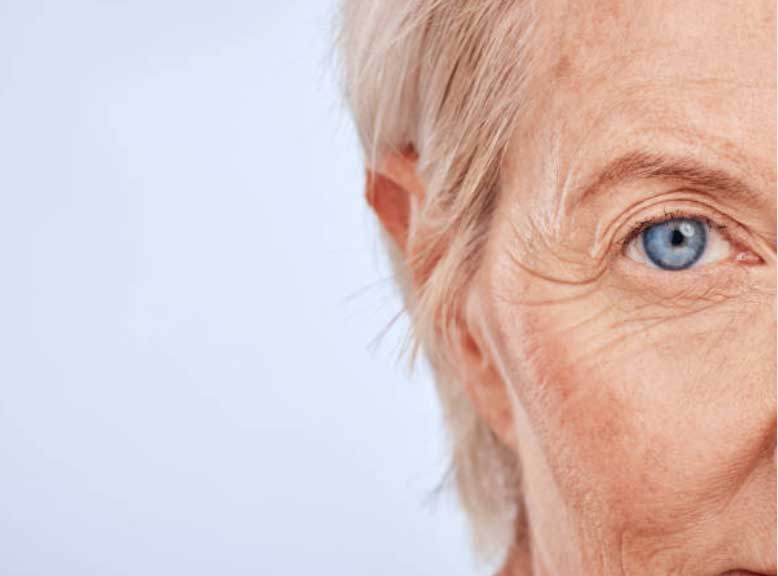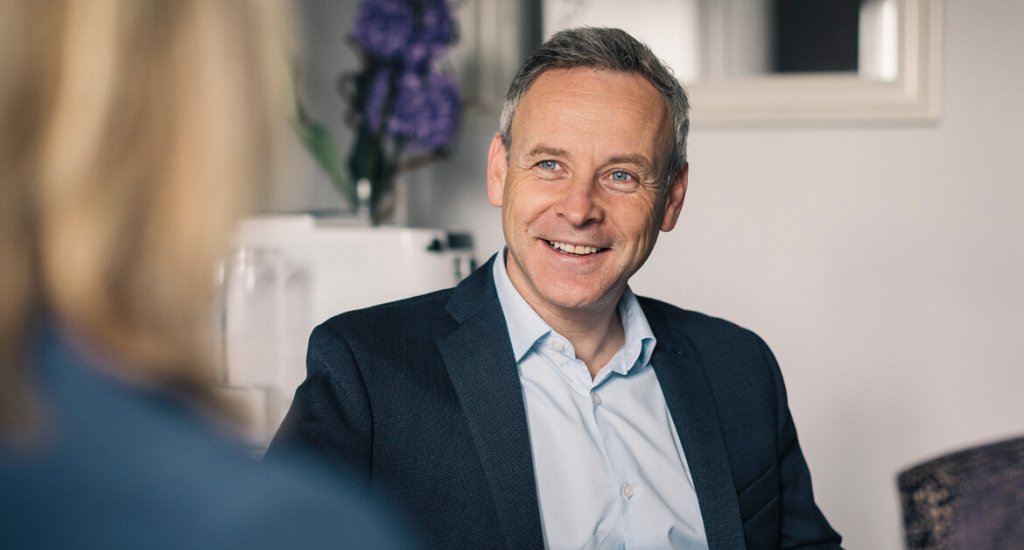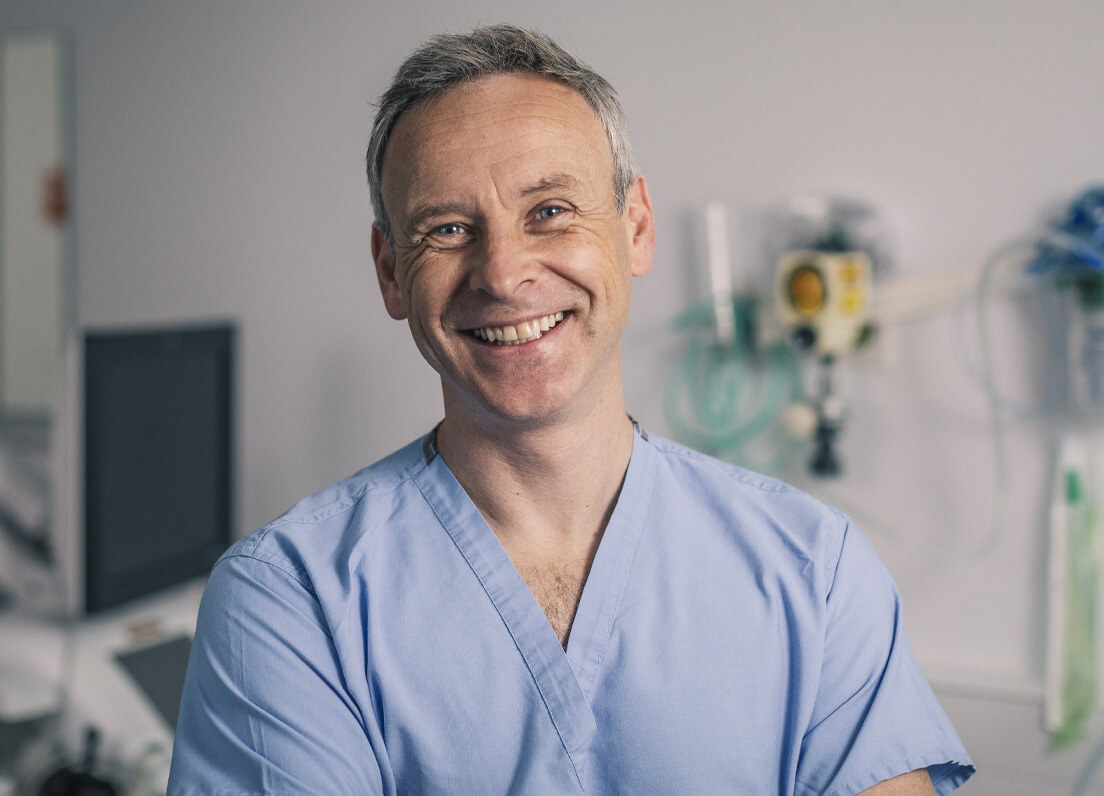What Happens During Eyelid Surgery Recovery
Blepharoplasty, commonly referred to as eye bag surgery or an eyelid lift, is a surgical procedure that aims to enhance the appearance of your eyes. Whether you’re dealing with sagging, droopy eyelids that make you look older than you are or finding excess skin on your eyelids is limiting your vision, this operation can be a good option. However, before scheduling your procedure, you should be aware of what the recovery after blepharoplasty entails so you can prepare mentally, physically, and emotionally for what lies ahead. In this blog, Consultant Plastic Surgeon Anthony MacQuillan will walk you through every step of your blepharoplasty recovery process, helping you know what to expect and how to ensure a smooth, successful recovery.
Understanding the Blepharoplasty Procedure
Before discussing recovery, it’s important to understand what the blepharoplasty procedure involves. This operation can be performed on the upper eyelids, lower eyelids, or both. It can be done as an outpatient procedure, meaning you’ll go home the same day or you can stay overnight (which is more common if you are having your lower lids done).
Anthony will make precise incisions along the natural lines of your eyelids to minimise visible scarring. Excess tissue – skin, muscle, or fat – is then removed or repositioned, and the incisions are closed with sutures. The goal is to give your eyes a more youthful, refreshed appearance.
Preparation for blepharoplasty includes general health assessments and eye exams. Anthony will provide detailed pre-operative instructions, including guidelines on eating, drinking, and medication use. Adherence to these instructions is crucial for the success of the operation and your subsequent recovery.
What to Expect Immediately After Eyelid Surgery?
After the surgery, you’ll be taken to a recovery room where your condition will be monitored. Once the anaesthesia wears off and Anthony clears you, you’ll be allowed to go home. Your eyes might feel a bit sore, but prescribed pain medication can help manage this discomfort. Because of the ointment you will have put in your eyes during the surgery it is not uncommon to have blurred vision when they wake up – don’t worry it is only the ointment!
Your eyelids may feel sticky, dry, or itchy, and you may experience tearing or sensitivity to light. These are normal reactions and should improve within a few days. You’ll also have some bruising and swelling, which will peak about 48 hours after the surgery and then gradually diminish.
It’s important to have someone drive you home and ideally stay with you for the first night. Your vision may be blurry (as stated above it is usually the drops or ointment that you will be asked to use), and your eyes may tire easily, making tasks like reading or watching TV difficult.
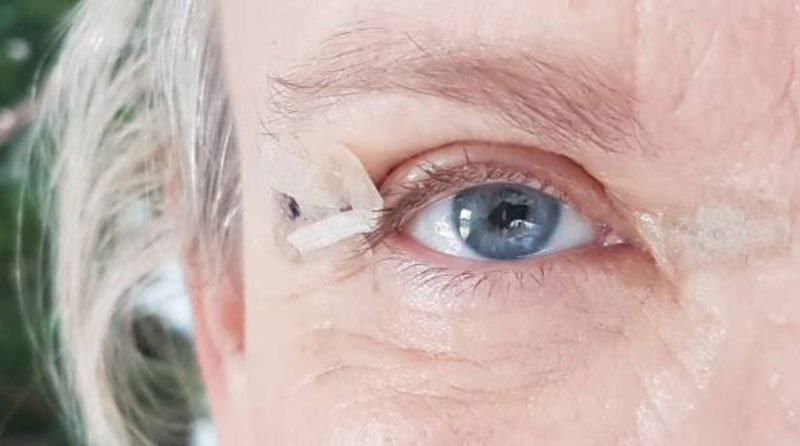
Recovery after Eyelid Surgery
The process of recovery after blepharoplasty, is a unique experience for each individual. However, there are general timelines and expectations that most patients can anticipate. Typically, the majority of people find themselves able to resume their normal daily activities within 10 to 14 days following the procedure. It is crucial during this initial recovery phase to allow your body ample time to heal. This means prioritising rest and steering clear of any strenuous physical exertions, such as heavy lifting, vigorous exercise, or any activities that could increase your blood pressure (potentially leading to increased bruising or even worse a haematoma – a collection of blood beneath the skin) or result in increased blood flow to the skin resulting in further swelling and flushing around the site of the surgery.
The best advice is to keep your head elevated (sleep on several pillows in a wedge so that your head is above the level of your heart), to help reduce swelling. Applying cold compresses can also be beneficial in managing swelling and discomfort (we use a Hilotherm post operatively to cool your face and eyes and usually have a unit available for you to go home with). It’s important to follow these recommendations diligently to aid in a smoother and quicker recovery.
Follow-up appointments: we will want to closely monitor your healing progress and normally you will be seen after a week to check on how the healing process is going. These check-ups are crucial as they allow the surgeon (me!) to assess the healing of the incisions, monitor the extent of swelling and bruising, and to ensure there are no signs of complications. If non-dissolvable stitches are used, they are removed about a week after the surgery and although I tend to use extremely fine dissolving stitches as the skin on the eyelids is so thin these often need removing as well. During these early stages, it’s common to notice some residual swelling or bruising. You might also find that your eyelids feel unusually stiff, and they may appear slightly uneven or asymmetrical. It’s important to remember that these are normal aspects of the healing process and they will gradually resolve as your body heals.
As you approach the third week post-surgery, you should start to observe significant improvements. The majority of the swelling and bruising should have subsided by this time, revealing the initial results of the surgery. The incisions should be healing well, becoming less noticeable. This period often brings a sense of excitement as you begin to notice the new contour of your eyelids and the refreshed, rejuvenated appearance of your eyes. The full results of the surgery, however will take a year to become completely apparent as the tissues settle and heal fully.
It is important to protect your eyes from wind (and sun) exposure during the recovery period. Your ability to blink will be a bit slower than normal (as the eyelids will be stiff) and exposure to drying agents (like the wind and if it is strong enough the sun) can result in your eyes having an insufficient tear film (which can lead to problems). Wearing (sun)glasses can help and using the drops prescribed can help prevent any such problems if you have to go out in such conditions for the first few weeks. Once the incisions have healed for the rest of the year applying sunscreen can help prevent the scar burning in the sun (which I have to say is fairly unlikely) but also can prevent pigment uptake by the scar and may result in the incision becoming permanently darkened.
If you experience any unexpected symptoms, such as severe pain, vision changes, or signs of infection, it’s imperative to contact your medical team immediately.
Overall, patience and careful adherence to your post-operative instructions are key to a successful recovery from blepharoplasty. With time, most patients find that the results of their eyelid surgery offer a significant enhancement to their appearance and an improvement in their overall quality of life.
Do’s and Don’ts
To ensure a smooth recovery after eyelid surgery, you should follow your post-operative care instructions diligently.
Applying cold compresses to your eyes will help to reduce swelling but do not put any form of ice (or frozen vegetables directly onto your skin – you will get a burn (and skin that has recently been operated on usually is numb as the sensory nerve fibres have been disrupted by the surgery.
Use the prescribed eye drops and ointments as directed and do not be tempted to start any ‘self directed wound care regime’ without discussing it your surgeon first.
Sleep with your head elevated to reduce the amount of lid swelling.
Avoid rubbing your eyes, as this can disrupt the healing process but it will also result in increased inflammation and swelling.
You should also refrain from wearing contact lenses or makeup until your doctor says it’s safe to do so.
Proper nutrition is crucial for healing. Eat a balanced diet rich in vitamins and minerals, and stay hydrated.
If you’re a smoker, it’s important to quit as smoking can delay healing and increase the risk of complications.
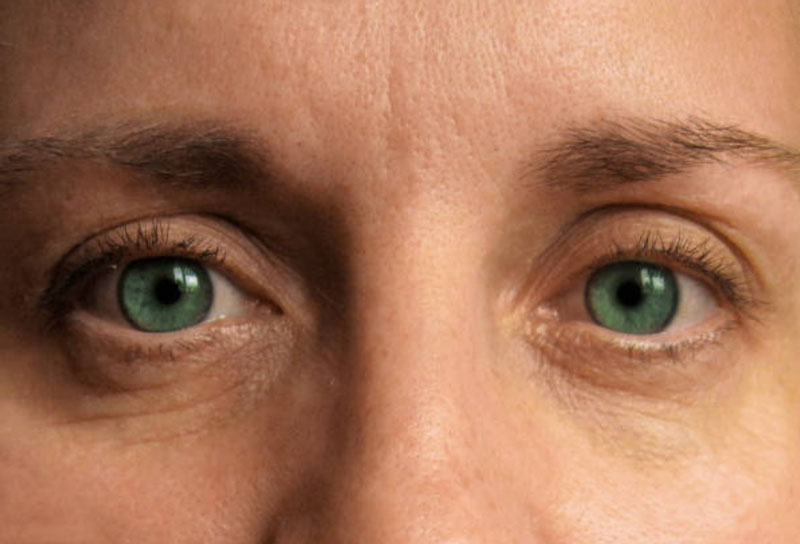
Potential Complications after Blepharoplasty and How to Handle Them
Blepharoplasty, is widely regarded as a safe procedure – your surgeon should run through these with you during the consultation process – if they haven’t it is definitely worth asking them to cover these with you. As with any surgical intervention, even low risk ones, eyelid surgery is not entirely free from risks. Understanding potential complications and knowing how to address them is an essential part of preparing for surgery.
Common Complications
- Infection: Although rare, infections can occur after blepharoplasty. Signs of infection include increased redness, swelling, warmth, and discharge from the incision sites. Fever may also be present
- Bleeding: Some bleeding is normal, but excessive bleeding can lead to complications and should be monitored
- Dry Eyes: This is a common issue post-surgery, often temporary but sometimes persistent, causing discomfort and irritation
- Difficulty Closing Eyes: In some cases, patients may temporarily struggle to completely close their eyelids after surgery
- Visible Scarring: While scars are an inevitable part of any surgery, they are usually well-concealed in blepharoplasty. In some instances, scars may be more visible than expected
- Changes in Eyelid Position: This includes issues like ectropion (outward turning of the eyelid) or entropion (inward turning of the eyelid)
- Loss of Vision: This is an extremely rare but serious complication that can occur due to various factors, including severe bleeding or infection
How to Handle Complications
- Immediate Communication: If you experience any unusual symptoms such as severe pain, vision changes, or signs of infection, it’s crucial to contact your medical team immediately. Early detection and treatment of complications can prevent them from worsening
- Follow Post-Operative Instructions: Adhering strictly to Anthony’s post-operative care instructions can significantly reduce the risk of complications. This includes taking prescribed medications, attending follow-up appointments, and following guidelines on activities and eye care
- Seek Prompt Medical Attention: For severe complications, such as significant bleeding or sudden vision loss, seek immediate medical attention. In such cases, timely intervention is critical
- Long-Term Care: For persistent issues like dry eyes or difficulty in eyelid movement, Anthony may recommend specific treatments or exercises. In some cases, additional procedures may be necessary to correct these issues
Prevention is Key
- Choosing the Right Surgeon: Selecting a qualified and experienced surgeon is one of the most effective ways to minimise the risk of complications. Ensure your surgeon is on the GMC Specialist Register for Plastic Surgery and has a track record of successful blepharoplasty procedures
- Comprehensive Pre-Operative Evaluation: A thorough evaluation before surgery can help identify any potential risk factors, such as pre-existing eye conditions, that could contribute to complications
- Understanding Risks: Being well-informed about the potential risks and complications allows you to make an educated decision about undergoing blepharoplasty and to be vigilant in the post-operative period
Choosing a qualified, experienced surgeon and following their pre-operative and post-operative instructions can significantly reduce your risk of complications.
Tips for a Smooth Recovery after Eyelid Surgery
Here are some tips to ensure a smooth recovery after eyelid surgery:
- First, be patient. Healing takes time, and it’s normal for the recovery to have ups and downs
- Stay positive and keep your end goal in mind. It might take up to 12 months to see the final result, but the renewed confidence and improved vision will be worth the wait
- Don’t hesitate to reach out to your healthcare team with any concerns or questions. They’re there to support you throughout your healing journey

FAQs about Recovery after Blepharoplasty
What can I expect immediately after blepharoplasty surgery?
- Immediately following blepharoplasty, it’s common to experience swelling, bruising, irritation, and dry eyes. Anthony will likely provide ointment and instructions for care. It’s important to follow these guidelines closely to ensure a smooth recovery.
How long does the recovery process take after blepharoplasty?
- Recovery times can vary, but most patients can return to normal activities within two weeks. Complete healing and the final results may take several months to fully manifest.
Are there any specific post-operative care instructions I should follow?
- Yes, Anthony will provide detailed post-operative care instructions. These usually include keeping your head elevated, using cold compresses to reduce swelling, avoiding strenuous activities, and following specific guidelines for eye care.
When can I start wearing makeup again after eyelid surgery?
- You should avoid wearing makeup until Anthony gives you the go-ahead, which is usually after a couple of weeks. This is to prevent infection and allow the incisions to heal properly.
Is the recovery from blepharoplasty painful?
- Most patients report minimal pain after blepharoplasty, which can be managed with prescribed or over-the-counter pain relief. However, if you experience significant pain, it’s important to consult your plastic surgeon.
How can I minimise scarring after blepharoplasty?
- To minimise scarring, follow Anthony’s post-operative instructions, avoid direct sun exposure, and use any scar-reducing treatments recommended by your surgeon. Most scars from blepharoplasty are well-concealed and fade over time.
When can I return to work after undergoing blepharoplasty?
- This depends on the nature of your work. Many patients can return to office jobs within 7-10 days (after upper lid surgery), but if your job is physically demanding, you may need more time off. Anthony will provide specific advice based on your individual case.
What should I do if I notice any complications during my recovery?
- If you notice any unusual symptoms such as severe pain, vision changes, or signs of infection, contact your plastic surgeon immediately. Timely medical advice is crucial for addressing any complications effectively.
Further Reading about Face Procedures with Consultant Plastic Surgeon Anthony MacQuillan
- Read more about Facelift Surgery Page
- Read more about Eyelid Surgery Page
- Read more about Ear Correction Surgery Page
- Read more about Top Tips to Sleep Better After Facelift Surgery
- Read more about Visible Effects of Ageing That Can Be Improved With a Facelift
- Read more about Hooded Eyelids
- Read more about How to Remove Stitches after Blepharoplasty
Medical References about Blepharoplasty Recovery
- Eyelid Surgery: What to Expect at Home – MyHealth Alberta
- Eyelid Surgery Recovery – ASPS
- Blepharoplasty (Eyelid Surgery) – Cleveland Clinic
- Blepharoplasty (Eyelid Surgery) – WebMD
- Blepharoplasty – Mayo Clinic

